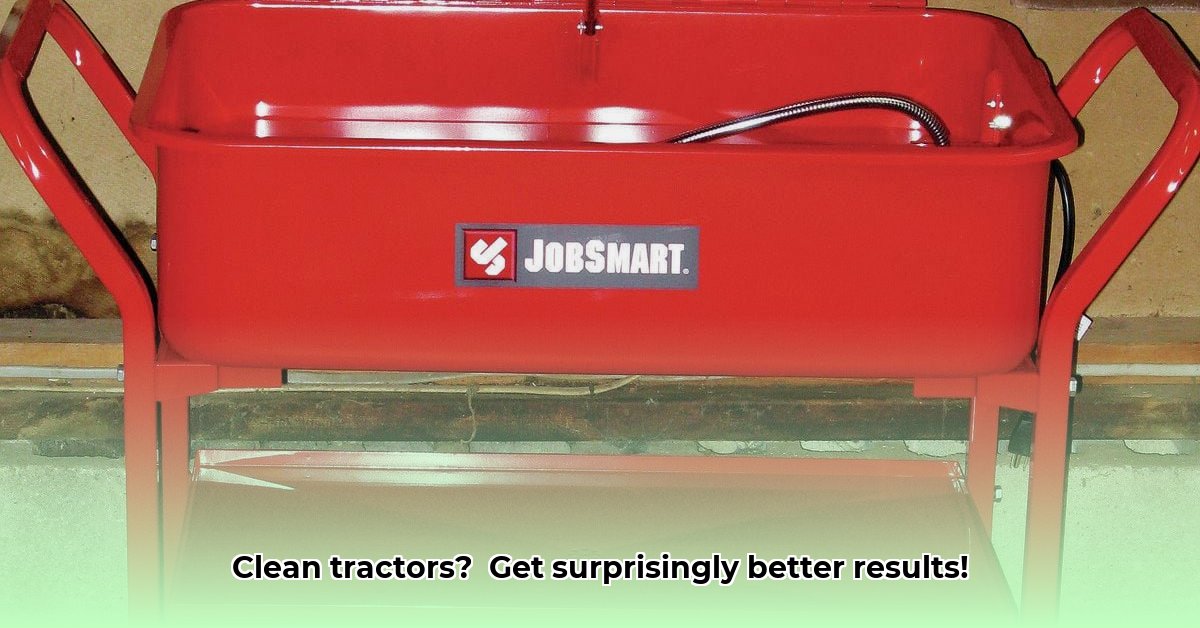
Cleaning tractor parts is a necessary but often messy task. This guide provides actionable steps to maximize your Tractor Supply parts washer's efficiency while minimizing environmental impact, promoting sustainable agricultural practices. We'll cover proper cleaning, maintenance, chemical selection, waste disposal, and troubleshooting – all focusing on extending the lifespan of your equipment and reducing waste.
Choosing Environmentally Friendly Cleaning Solutions
Harsh chemicals harm the environment. Instead, prioritize biodegradable, water-based cleaners labeled “eco-friendly,” “biodegradable,” or “phosphate-free.” Your Tractor Supply parts washer’s manual may provide recommendations. Consulting your local Tractor Supply store is also a helpful resource. Remember, environmentally responsible cleaning benefits both your farm and the planet.
Pre-Cleaning: Maximizing Efficiency
Before using the parts washer, pre-clean parts to remove large debris, mud, and excess grease. A stiff-bristled brush, compressed air, or a wire brush are effective tools. This reduces the workload on your parts washer, conserving cleaning solution and time. Is pre-cleaning worth the effort? Absolutely! It significantly improves cleaning efficiency.
Mastering the Cleaning Process: A Step-by-Step Guide
Follow these steps for optimal cleaning results:
Filling: Follow manufacturer instructions precisely for water and cleaning solution levels. Accurate proportions are crucial for efficiency and avoid waste.
Submersion and Agitation: Submerge parts completely. Utilize the parts washer's agitation features to loosen stubborn dirt and grime—this enhances cleaning effectiveness.
Thorough Rinsing: Rinse thoroughly with clean water to eliminate all traces of cleaning solution, preventing residue buildup and ensuring parts are spotless and corrosion-free. Rinsing is a vital step for both part longevity and environmental protection. How thoroughly should you rinse? Until all traces of cleaning solution are gone!
Drying and Inspection: Air drying is most energy-efficient. Alternatively, use compressed air for faster drying. Always inspect parts for any remaining dirt or damage.
Parts Washer Maintenance: Extending Lifespan
Regular maintenance extends the parts washer’s lifespan, reducing the need for replacements. This preventative approach yields long-term cost savings and minimizes waste.
Tank Cleaning: Periodically clean the tank to remove sludge and sediment. This maintains peak performance and extends equipment life.
Filter Inspection and Cleaning: Inspect and clean or replace filters regularly. Clogged filters reduce efficiency and can damage the pump.
Fluid Level Monitoring: Maintain correct water and cleaning solution levels to prevent overheating and damage.
Responsible Waste Disposal: Environmental Stewardship
Proper waste disposal is crucial. Never pour used cleaning solutions down the drain. Consult local regulations for safe disposal methods; many hazardous waste facilities accept such solutions. This simple step greatly reduces water contamination and protects the environment.
Troubleshooting Common Issues
This table provides solutions to common parts washer problems:
| Problem | Solution |
|---|---|
| Weak Cleaning Performance | Check filter; use fresh cleaning solution; clean the tank thoroughly. |
| Pump Malfunction | Check fluid levels; inspect for pump obstructions. |
| Leaks | Inspect seals and gaskets; seek professional repair if needed. |
Integrating Sustainable Practices: A Broader Perspective
Efficient parts washer use is part of a larger sustainable strategy. Efficient water and chemical usage in your workshop mirrors efficient water management in broader agricultural practices—such as utilizing a precision irrigation system. These interconnected practices contribute to overall sustainability. What long-term strategy might reduce your overall environmental impact?